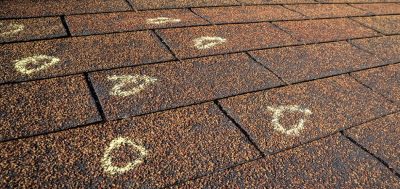The Importance of Proper Roof Ventilation in Humid Climates
Proper roof ventilation makes a home warm, durable, and energy-efficient, especially when the cli...
Understand how to recognize if your roofing work was completed poorly and avoid larger headaches later. Signs like crooked shingles, substandard flashing, or recurring leaks are a warning signal.
Bad ventilation or inharmonious materials can cut your roof short. Catching these problems early protects your home’s value and saves you from expensive repairs. In this guide by TurnKey Roofers, we’ll delineate typical warning signs and how to respond if your roof falls short. If you’re unsure about the condition of your roof, reach out to us today—we’ll walk you through your options and help keep your home safe and secure.

Prevent unwanted and expensive roof repairs by knowing if the job done on your roof is not as good as it should be. Here are some of the most crucial warning signs to watch out for.
Pay attention to rooflines that seem wavy or sagging–this typically indicates structural issues or incorrect installation. Misaligned shingles are another red flag, not only from a functionality standpoint, but when it comes to aesthetics.
Leaks after the first rain are a dead giveaway. Leaks along your walls and ceilings indicate the roof was not waterproof, while mold or water spots in the attic indicate that they were not sealed well around key areas. Look around chimneys, vents, or skylights for live leaks. Defective drainage systems can trap water, accelerating the degradation of the roof.
Broken, curled, or missing shingles indicate cheap material or sloppy workmanship. Shattered flashing around edges and penetrations like chimneys or vents can let water in. Early wear, like loss of granules on shingles, indicates improper material handling. Always verify that quality, defect-free materials were installed.
Roofing underlayment, so important for moisture protection, is frequently neglected in shoddy roof work. Skipped drip edges permit water to enter the roof structure, and if flashing is improperly installed or skipped, it will permit leaks in valleys or at chimneys. Make sure vents, so important to good ventilation, were replaced and properly installed.
Trailing nails, shingles, or tools scattered around the job site yell unprofessional. Property damage to siding, gutters, or landscaping during the job is an indicator of sloppiness.

Close inspection can uncover poor workmanship, rotten materials, or unsafe conditions that could make the roof leak or degrade early.
Flashing is essential in diverting water away from susceptible locations. Look for holes, rust, or badly sealed flashing, all of which cause leaks. Flashing should be nailed tightly and lapped the right way. Crooked or loose flashing will give way during a downpour.
Bad nail spacing indicates bad installation. Nails should be driven straight, flush with the shingle surface. Overdriven nails can tear shingles, and underdriven ones leave them loose. Look for exposed nails because they are like water highways. Check for toe-nails that should be located per manufacturer specifications, usually just below the adhesive strip, to secure the shingle’s integrity.
Underlayment is the first crucial layer of protection beneath shingles. Verify that it exists and look for wrinkles or tears that can defeat waterproofing. Overlaps should be tight, and the material must be anchored solidly to prohibit shifting. Match your underlayment to your roof system.
Proper attic ventilation excludes heat and moisture damage. Inspect the soffit and ridge vents for clogged ones or those that are installed incorrectly. Condensation areas or mold areas in the attic mean that airflow is poor, which shortens a roof’s life. Ventilation issues make your home inefficient with energy, and it takes more to run utilities.
Catching a bad roof job early saves time, money, and stress. Look out for uneven shingles, weak seals, or improper flashing. A sturdy roof protects both your home and your peace of mind, so don’t settle for subpar work.
Contact us at TurnKey Roofers today to get expert guidance and dependable solutions. Together, we’ll make sure your roof is built to last and your home stays protected for years to come.

Proper roof ventilation makes a home warm, durable, and energy-efficient, especially when the cli...

The historic homes of New Orleans require distinctive roofing solutions that strike a balance bet...

New Orleans' high humidity, commonly over 70%, can significantly damage roof decking. Chronic dam...

Choosing between roof restoration and repair can save time, money, and stress. Understanding the ...

New Orleans has a unique climate that challenges homeowners when it comes to choosing the right r...

Table of Contents 1. Key Takeaways 2. Impact of Roof Condition on Home Value 3. 4 Key Thin...